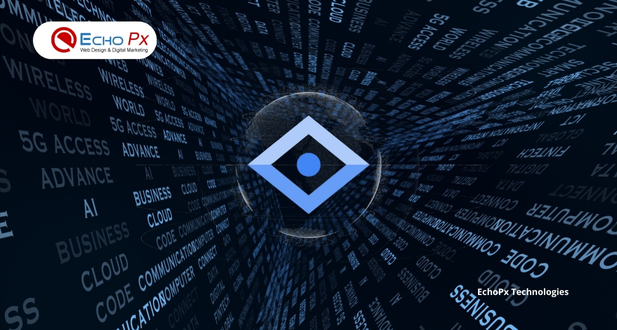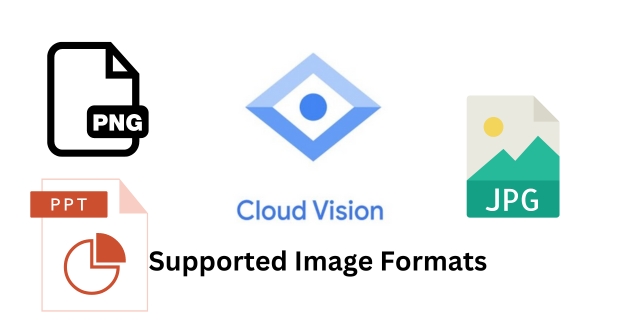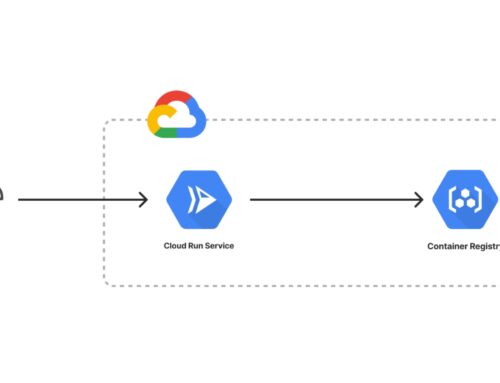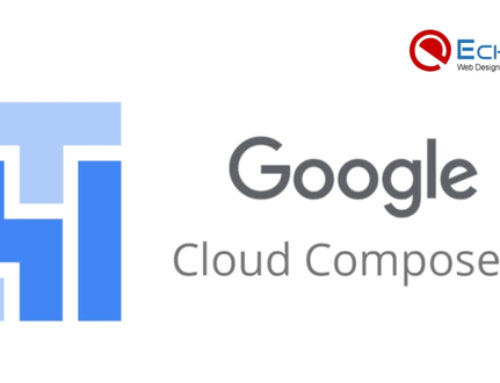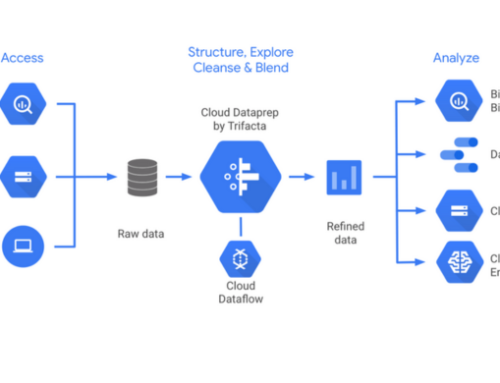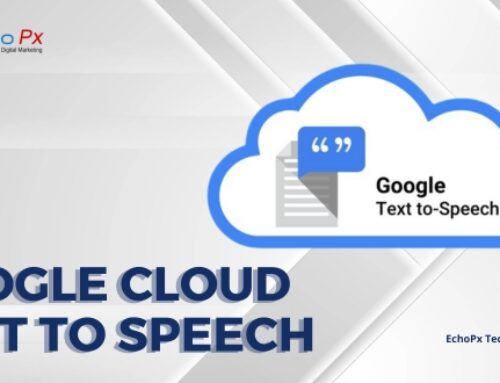Introduction
Definition of GCP Cloud Vision AI
GCP Cloud Vision AI stands as a cutting-edge solution within the Google Cloud Platform (GCP), revolutionizing the realm of computer vision. At its core, GCP Cloud Vision AI is a cloud-based service that empowers developers and businesses to integrate advanced image analysis capabilities into their applications. Leveraging sophisticated machine learning models, this tool can interpret and understand the content within images, providing valuable insights and driving innovation in a variety of industries.
Significance in the Field of Computer Vision
In the dynamic landscape of computer vision, GCP Cloud Vision AI holds significant importance. Its advanced capabilities transcend traditional image recognition, offering a plethora of features such as label detection, OCR, and object tracking. This breadth of functionalities makes it a versatile tool applicable across diverse domains, from healthcare and retail to manufacturing and beyond. As organizations increasingly rely on visual data for decision-making, GCP Cloud Vision AI emerges as a pivotal enabler, providing not just image analysis but a deeper understanding of visual content.
Key Features and Capabilities
GCP Cloud Vision AI boasts a rich set of features and capabilities that distinguish it in the competitive landscape of computer vision services. Among its key features are robust image labeling, enabling precise identification of objects and entities within images. The Optical Character Recognition (OCR) capability empowers the extraction of text from images, fostering enhanced document analysis. Additionally, the tool excels in detecting faces, landmarks, and even sentiments, allowing for a nuanced understanding of visual content. These capabilities collectively position GCP Cloud Vision AI as a comprehensive solution, catering to the evolving needs of industries leveraging visual data for insights and decision-making.
This Introduction section sets the stage by defining GCP Cloud Vision AI, highlighting its significance in computer vision, and providing an overview of its key features and capabilities.
Understanding GCP Cloud Vision AI
Core Concepts
To grasp the essence of GCP Cloud Vision AI, understanding its core concepts is fundamental. At its foundation, the service relies on state-of-the-art machine learning algorithms, specifically tailored for visual data analysis. Core concepts encompass image recognition, feature extraction, and deep learning methodologies. GCP Cloud Vision AI transcends basic image interpretation, delving into nuanced aspects like context understanding and image sentiment analysis. Familiarity with these core concepts lays the groundwork for harnessing the full potential of this powerful tool in diverse applications.
GCP Cloud Vision AI is founded on several core concepts that underpin its functionality and distinguish it as a leading platform in the field of computer vision.
- Image Analysis:
At the heart of Cloud Vision AI is its ability to analyze images comprehensively. The platform employs sophisticated algorithms to extract valuable insights from visual data, ranging from simple features like color and size to complex elements such as facial expressions and object detection.
- Machine Learning Integration:
Cloud Vision AI integrates machine learning models, allowing it to continuously improve its accuracy and performance. As it encounters more diverse datasets, the platform refines its understanding of images, making it adept at recognizing patterns, objects, and context.
- Labeling and Categorization:
The platform excels in labeling and categorizing images, a fundamental aspect of visual data analysis. It can identify objects, scenes, and activities within an image, providing users with a detailed breakdown of the visual content.
- Feature Extraction:
Cloud Vision AI employs advanced techniques for feature extraction, enabling it to identify specific elements within an image. Whether it’s extracting text, detecting landmarks, or recognizing faces, the platform’s feature extraction capabilities contribute to its versatility.
- Integration with Google’s Pre-trained Models:
To enhance its capabilities, Cloud Vision AI leverages pre-trained models developed by Google. These models cover a wide array of visual recognition tasks, allowing users to tap into Google’s extensive expertise in image analysis.
Key Components of GCP Cloud Vision AI
GCP Cloud Vision AI comprises key components that synergize to deliver robust image analysis capabilities. The API (Application Programming Interface) acts as the gateway, enabling seamless integration of Vision AI into applications and workflows. The underlying machine learning models, constantly trained and refined by Google, form the intelligence backbone. These models encompass a spectrum of features, including image classification, object detection, and facial recognition. The client libraries and SDKs (Software Development Kits) facilitate developers in leveraging Vision AI functionalities across various programming environments. Understanding these components provides clarity on how GCP Cloud Vision AI operates cohesively to provide advanced visual insights.
GCP Cloud Vision AI comprises several key components, each playing a pivotal role in delivering robust visual data analysis capabilities.
- Vision API:
At the core of Cloud Vision AI is the Vision API, a powerful tool that enables users to extract valuable information from images. The API supports a variety of image analysis features, including label detection, OCR, facial recognition, and more.
- AutoML Vision:
For users with specific requirements, AutoML Vision offers a customizable solution. It allows organizations to train custom machine learning models tailored to their unique visual recognition needs, expanding the platform’s applicability across diverse industries.
- Model Evaluation Tools:
To ensure the accuracy and reliability of visual data analysis, Cloud Vision AI provides model evaluation tools. These tools enable users to assess the performance of their machine learning models, facilitating continuous improvement and optimization.
- Cloud Storage Integration:
Cloud Vision AI seamlessly integrates with Google Cloud Storage, streamlining the process of accessing and analyzing images stored in the cloud. This integration enhances the platform’s scalability and accessibility for users with extensive image datasets.
- Interactive Image Annotation:
For organizations involved in creating custom models with AutoML Vision, Cloud Vision AI offers interactive image annotation tools. These tools simplify the process of labeling and annotating images, a crucial step in training accurate and effective machine learning models.
Supported Image Formats
Versatility in handling different image formats is a hallmark of GCP Cloud Vision AI. The service accommodates a wide array of image types, including standard formats like JPEG and PNG. Additionally, support extends to more specialized formats such as TIFF. This flexibility is crucial for industries with diverse imaging needs, ensuring that Vision AI can seamlessly integrate into existing workflows without imposing restrictive format constraints. The comprehensive support for image formats enhances the adaptability of GCP Cloud Vision AI, making it a go-to solution for organizations dealing with varied visual data sources.
Cloud Vision AI supports a diverse range of image formats, ensuring flexibility and compatibility for users working with different types of visual data.
- Common Image Formats:
The platform seamlessly handles standard image formats such as JPEG, PNG, GIF, and BMP. This broad compatibility simplifies the workflow for users dealing with images in various formats.
- Document Formats:
In addition to common image formats, Cloud Vision AI extends its support to document formats like PDF. This capability is particularly valuable for users dealing with documents containing images, such as scanned pages or reports.
- Cloud Storage Integration:
The platform’s compatibility extends to images stored in Google Cloud Storage, offering a convenient and integrated approach to accessing and analyzing images directly from the cloud.
Use Cases
GCP Cloud Vision AI finds application across a spectrum of use cases, showcasing its versatility in addressing diverse industry needs. From automating image categorization in e-commerce to enhancing document analysis in healthcare, the use cases span multiple domains. The tool’s ability to extract valuable information from images, identify objects, and even gauge sentiments makes it indispensable for applications like content moderation, accessibility features, and sentiment analysis. These real-world applications underscore the practical relevance of GCP Cloud Vision AI in transforming visual data into actionable insights.
This section delves into the fundamental concepts, components, supported image formats, and real-world use cases of GCP Cloud Vision AI, providing readers with a comprehensive understanding of its capabilities and potential applications.
Cloud Vision AI’s versatility is evident in its diverse range of use cases, demonstrating its applicability across various industries and scenarios.
- Retail and E-Commerce:
In the retail sector, Cloud Vision AI revolutionizes product recognition and inventory management. It can swiftly identify products, read barcodes, and streamline the cataloging process, enhancing overall efficiency.
- Healthcare:
In healthcare, the platform plays a crucial role in medical image analysis. It aids in diagnosing conditions from medical images, ensures accurate documentation, and facilitates research by extracting valuable insights from visual medical data.
- Media and Entertainment:
Cloud Vision AI contributes to content moderation and recommendation systems in the media and entertainment industry. It can analyze visual content, detect inappropriate images or videos, and personalize content recommendations based on user preferences.
- Manufacturing and Quality Control:
For manufacturing, Cloud Vision AI enhances quality control processes. It can identify defects in products, inspect manufacturing lines for compliance, and contribute to overall quality assurance.
- Public Safety and Security:
The platform is instrumental in public safety and security applications. It can analyze surveillance footage, identify objects or individuals, and contribute to the detection and prevention of security threats.
The use cases outlined above represent just a fraction of the possibilities unlocked by Cloud Vision AI. Its adaptability and sophistication make it a transformative tool across industries, offering solutions to complex visual data challenges.
Getting Started with GCP Cloud Vision AI
Setting Up GCP Cloud Vision AI
Getting started with GCP Cloud Vision AI involves a seamless setup process within the Google Cloud Platform. Begin by creating a project in the GCP Console dedicated to your Vision AI endeavors. Subsequently, enable the Cloud Vision API for the project. Authentication mechanisms, such as creating service accounts and obtaining API keys, play a pivotal role in ensuring secure access to Vision AI functionalities. Detailed documentation and user-friendly interfaces guide users through the setup, making it accessible to developers and organizations, regardless of their prior experience with cloud services.
Using the Vision API
Harnessing the power of GCP Cloud Vision AI is predominantly realized through the Vision API. This API serves as the gateway for developers to integrate Vision AI capabilities into their applications. The Vision API supports a variety of features, including label detection, face detection, and text extraction. Developers can send requests to the API, which processes the images and returns rich, actionable insights. This streamlined interaction enables developers to seamlessly incorporate advanced image analysis into their applications, enhancing functionalities and user experiences.
Implementing Batch Processing
For scenarios involving the analysis of multiple images simultaneously, GCP Cloud Vision AI offers a robust solution through batch processing. This feature allows developers to submit a collection of images for analysis in a single request, optimizing efficiency and resource utilization. Implementing batch processing is particularly beneficial in scenarios where large datasets or bulk image analysis is required. The API efficiently processes each image within the batch, returning comprehensive results. This capability streamlines workflows, making it a valuable asset for applications with high-volume image analysis requirements.
This section guides users through the initial steps of setting up GCP Cloud Vision AI, utilizing the Vision API for diverse image analysis tasks, and implementing batch processing for efficient handling of multiple images. The emphasis is on making the onboarding process user-friendly and providing practical insights for developers and organizations integrating GCP Cloud Vision AI into their projects.
Advanced Features and Customization
Custom Models for Specialized Analysis
One of the standout features of GCP Cloud Vision AI is the ability to create custom models tailored to specific analysis requirements. This empowers organizations to train models with their own datasets, allowing for specialized image recognition. Whether it’s recognizing industry-specific products or unique visual patterns, custom models enhance the accuracy and relevance of image analysis. The training process involves providing labeled examples to the AutoML Vision service, which then refines the model based on the provided data. This customization capability ensures that Vision AI aligns precisely with the unique visual elements important to a particular application or industry.
Optical Character Recognition (OCR)
GCP Cloud Vision AI excels in Optical Character Recognition (OCR), enabling the extraction of text from images with exceptional accuracy. This feature proves invaluable in scenarios where digitizing printed or handwritten text is crucial. From digitizing documents for efficient archival to enhancing accessibility features in applications, OCR extends the utility of GCP Cloud Vision AI. The OCR capabilities cover a spectrum of languages, making it a versatile solution for applications with multilingual requirements. This section delves into the nuances of leveraging OCR through GCP Cloud Vision AI, providing insights into its applications and potential impact on diverse industries.
Label Detection and Object Tracking
Label detection and object tracking further amplify the capabilities of GCP Cloud Vision AI in understanding the content of images. The label detection feature enables the identification of objects, scenes, and activities within an image. This proves instrumental in applications where categorizing visual elements is essential, such as content moderation in social media or cataloging images in e-commerce. Object tracking takes this a step further, allowing for the recognition and tracking of specific objects across multiple frames or images. This is particularly beneficial in video analysis, providing a dynamic understanding of object movement and interaction over time.
The advanced features and customization options within GCP Cloud Vision AI, including custom models, OCR capabilities, label detection, and object tracking, empower users to tailor the service to their unique needs. This section provides a detailed exploration of these advanced functionalities, offering practical insights into their applications and showcasing the flexibility of GCP Cloud Vision AI in handling specialized image analysis tasks.
Security and Compliance Considerations
Data Privacy and Compliance
Ensuring data privacy and compliance is paramount in the deployment of GCP Cloud Vision AI. The platform aligns with industry regulations and best practices, providing users with a secure environment for handling sensitive visual data. Compliance measures include adherence to standards such as GDPR, HIPAA, and others, depending on the industry and region. GCP Cloud Vision AI incorporates features that allow users to implement data anonymization and manage access controls effectively. By prioritizing data privacy and compliance, organizations can confidently integrate Vision AI into their workflows, knowing that robust safeguards are in place to protect sensitive visual information.
Encryption Measures
GCP Cloud Vision AI implements robust encryption measures to safeguard data during both transit and storage. Data in transit is secured through industry-standard encryption protocols, ensuring that visual data sent to and from the platform remains confidential and protected from potential interception. Additionally, data at rest is encrypted to mitigate risks associated with unauthorized access. Google Cloud’s encryption capabilities, coupled with secure key management practices, contribute to a comprehensive security posture. This encryption-centric approach ensures that organizations leveraging GCP Cloud Vision AI can trust that their visual data is handled with the highest level of security, meeting stringent compliance and regulatory requirements.
This section emphasizes the commitment of GCP Cloud Vision AI to data privacy and compliance. By exploring the platform’s compliance measures and encryption protocols, users gain a deeper understanding of the security framework supporting the handling of visual data. The focus is on instilling confidence in organizations seeking to adopt GCP Cloud Vision AI for their image analysis needs, assuring them that the platform prioritizes the protection and privacy of their data.
Real-world Applications and Case Studies
Industry-specific Implementations
GCP Cloud Vision AI has made significant strides in transforming industries through tailored implementations that address specific challenges and opportunities. In healthcare, the platform aids medical professionals in diagnostics by analyzing medical images, leading to faster and more accurate assessments. The retail sector leverages Vision AI for inventory management, ensuring precise tracking and restocking based on visual recognition. In manufacturing, visual inspection powered by GCP Cloud Vision AI enhances quality control processes, identifying defects and anomalies with high precision. These industry-specific implementations showcase the versatility and adaptability of Vision AI in addressing unique demands across diverse sectors.
Lessons Learned from Case Studies
Analyzing case studies provides valuable insights into the practical applications of GCP Cloud Vision AI and the lessons learned by organizations in their adoption journeys. Common themes include the importance of thorough data preparation for model training, the iterative nature of refining models for improved accuracy, and the integration challenges that organizations may encounter. Case studies also emphasize the need for clear communication and collaboration between data scientists, domain experts, and stakeholders to ensure the successful deployment and utilization of Vision AI. By understanding the lessons learned from real-world scenarios, organizations can navigate their own implementations more effectively, anticipating challenges and optimizing their use of GCP Cloud Vision AI.
Future Trends and Innovations
As technology continues to evolve, GCP Cloud Vision AI is poised to embrace future trends and innovations in the field of computer vision. Advancements in deep learning algorithms, enhanced model interpretability, and increased integration with edge computing are anticipated. The platform’s ability to adapt to emerging trends ensures that users can stay at the forefront of technological developments. Additionally, innovations in areas like augmented reality and virtual reality may further extend the applications of Vision AI, opening new possibilities for interactive and immersive visual experiences. This section provides a forward-looking perspective, offering readers insights into the exciting future trends that may shape the landscape of GCP Cloud Vision AI.
This section delves into the real-world impact of GCP Cloud Vision AI through industry-specific implementations and the lessons learned from case studies. It also offers a glimpse into the future by highlighting anticipated trends and innovations, showcasing the continued relevance and potential of GCP Cloud Vision AI in addressing evolving challenges and opportunities.
Conclusion
As we conclude our exploration into the dynamic realm of GCP Cloud Vision AI, it becomes evident that this platform stands at the forefront of cutting-edge innovations in computer vision. Through this journey, we’ve unraveled the depth of its capabilities, from core concepts to advanced features, and witnessed its real-world applications across diverse industries.
Recap of Key Takeaways:
GCP Cloud Vision AI emerges as a game-changer, offering customizable models, powerful optical character recognition, and the ability to handle various image formats. It is not just a tool; it’s a comprehensive solution for visual data analysis, with industry-specific implementations highlighting its adaptability and impact.
Encouragement for Readers:
To our readers, we extend an enthusiastic invitation to dive into the world of GCP Cloud Vision AI. Start with the fundamentals, explore the practical applications through industry use cases, and envision the possibilities that lie ahead. The platform’s continuous evolution ensures that you stay ahead in harnessing the potential of visual data. Embrace GCP Cloud Vision AI as your ally in unraveling the insights hidden within images, and let innovation guide your journey in the fascinating field of computer vision. Whether you are a novice or an experienced professional, the world of visual intelligence awaits your exploration with GCP Cloud Vision AI as your trusted companion.

